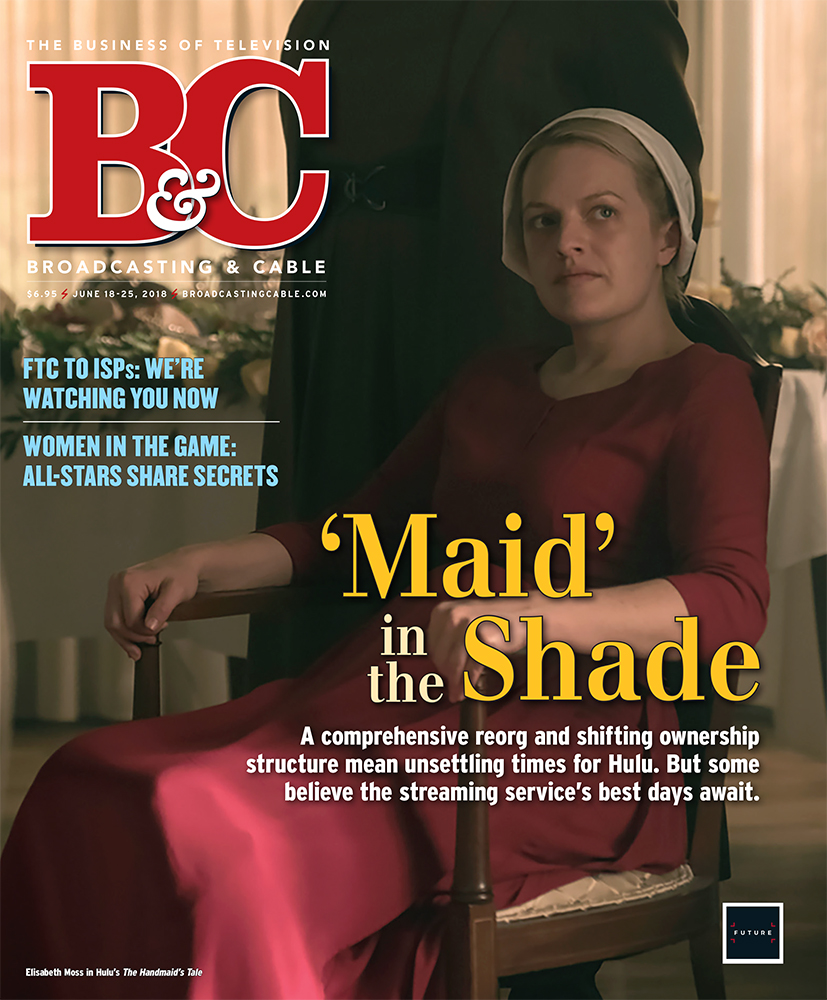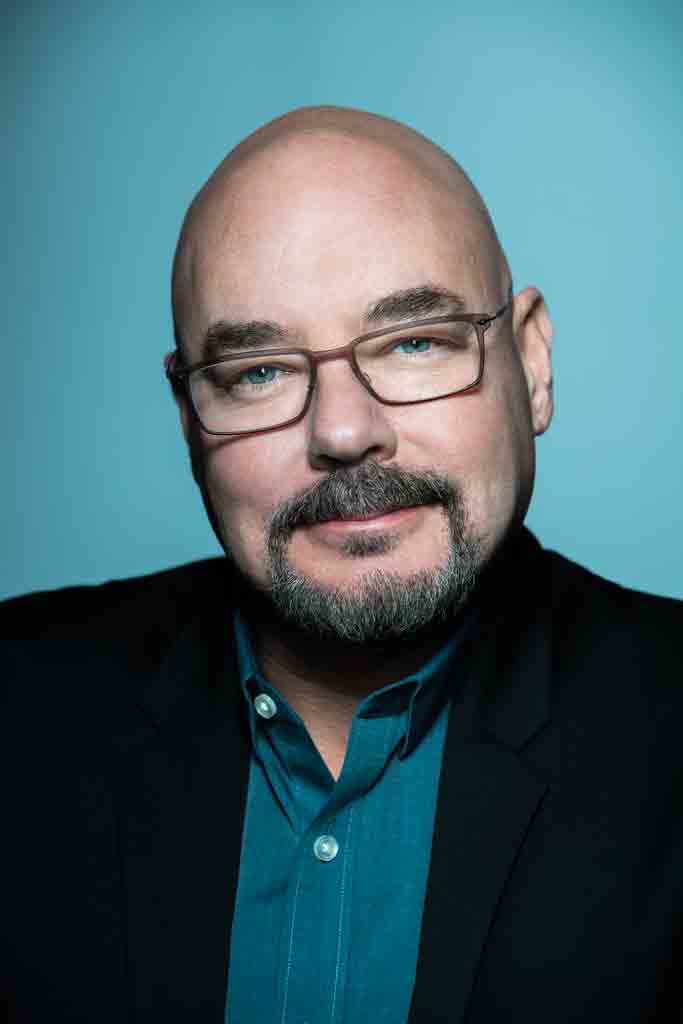Hulu Forges on Amidst Little Fires Everywhere

WHY THIS MATTERS: Control of streaming service Hulu is a key piece of the 21 Century Fox assets at play in the Disney-Comcast bidding war.
What happens when a fast-moving company in a fast-moving business pauses to reorganize? Hulu will find out — fast.

Hulu’s recent reorganization, the handiwork of CEO Randy Freer, took many by complete surprise. The former Fox Networks Group president, not yet a year in the Hulu job, vowed to focus the streaming service on four priorities: subscriber journey, technology & products, content and advertising. Along with new executive hires, there were departures as well, including Joel Stillerman, chief content officer. Ben Smith, senior VP of experience, and Tim Connolly, senior VP of partnerships and distribution, were also departing, no longer “Hulugans,” in company lingo.
Freer said the moves will strengthen the company’s odds against bigger players, and make it even more valuable to its owners, who are in flux at the moment. With AT&T’s acquisition of Time Warner finally getting through the courts, The Walt Disney Co. and Comcast are closing in on Fox’s assets, including its stake in Hulu.
Some in Hollywood were struck by word of the reorg, particularly the loss of Stillerman, a seasoned AMC Networks alumnus. Others have wondered aloud about the future direction of a company with shifting majority ownership.
“We have great relationships with all of our owners — they have all been very supportive of our strategy and growth, and we anticipate that will continue, regardless of how things shake out,” Freer said.
But even amidst such irresolution, plenty of people in the creative community say Hulu, home of the popular drama The Handmaid’s Tale, remains a hotbed of talent for quality series.
Broadcasting & Cable Newsletter
The smarter way to stay on top of broadcasting and cable industry. Sign up below
Liz Tigelaar, who was showrunner on Hulu comedy Casual and now runs the show at Little Fires Everywhere, which Hulu acquired in a bidding war, gave the network’s creative executives standout marks for bringing out the best in producers. “I thought networks were something you had to get through to do what you want to do,” she said. “But at Hulu, they are such collaborators. They have an enthusiasm [for your project] that I had not seen before.”
These are eventful times at Hulu, which has 20 million subscribers. Key to the reorganization is a content partnerships chief, who has not yet been named. Smash series The Handmaid’s Tale debuted season two in late April, and seeks to repeat its unlikely best drama wins at the Emmy Awards and Golden Globes.
“I think they’re doing really well, from the data I can see,” Pivotal Research Group senior research analyst Brian Wieser said. “The metrics I see look really good, and the comments I hear from the advertising community are good, too.”
Rethinking the Model

As part of its reorganization, Hulu put technology and products into a lone group, believing the two areas must work in absolute lockstep for Hulu to succeed. Content, too, had been two divisions, acquisition of off-network programs as well as originals. Craig Erwich, senior VP and head of content, continues to oversee originals, including the Seth Rogen comedy Future Man and the George Clooney drama Catch 22.
The well-regarded Stillerman had been brought in to oversee Hulu’s content acquisitions, originals development and content partner management teams. He was hired by then-CEO Mike Hopkins. Five months after Stillerman’s hiring was announced, Hopkins revealed he was leaving to be chairman of Sony Pictures Television. Freer, then the president and chief operating officer of Fox Networks Group, was named Hulu CEO in October. After arriving in Southern California, Stillerman was met with “knotty complications,” according to The New York Times. His vision for Hulu, the Times added, “did not impress his corporate overlords.”

But Wieser thinks little of the corporate upheaval. A CEO switch typically means the departure of many as eight out of 10 direct reports within a year, he said. “It’s normal churn,” Wieser said. “I don’t necessarily read a lot into the turnover.”
Dan Phillips, former chief operating officer at TiVo, is now Hulu’s chief technology officer, with oversight of the technology & products group. Hulu’s advertising division is unchanged, while Kelly Campbell, chief marketing officer, oversees the subscriber journey division. Jaya Kolhatkar is chief data officer, coming from a senior post at Walmart.
The head of content partnerships hire is a key one. “We are looking for a senior executive to lead the strategy across all of our licensed, network and add-on content, both live and on-demand,” Freer said. “One thing that uniquely differentiates Hulu is our ability to offer viewers nearly all the TV ever made, all in one place — whether that’s live, next-day or library content — and our head of content partnerships will drive all of that.”
While it is original programs that define a network, Hulu is bullish on its off-net slate, which includes Seinfeld, 30 Rock, The Golden Girls and South Park. Hulu said more than 35,000 people watched all 331 episodes of ER within its first two months on the platform.
There was concern that viewers might not tackle such a sizable project with so many hot new shows clogging their DVR, VP of content acquisition Lisa Holme said. “We worried that 300 episodes might be off-putting to people,” she said. “We thought they might not dive in, but they did.”
Hulu also licenses popular current series, such as NBC’s This Is Us and Fox’s Empire, which allows subscribers to catch up on hit shows they may have come late to. “Nobody else can offer that,” Holme said.
Freer announced 800,000 subscribers for Hulu with Live TV, which sells for $39.99 a month and launched in May 2017. It’s a strong start for the skinny bundle. (Hulu’s streaming service costs $7.99 per month, or $11.99 per month for the version without ads.)
“Eight hundred thousand is pretty good,” Jill Rosengard Hill, executive VP at Frank N. Magid Associates, said, “considering the number of years it took for Sling TV to get to 2.3 million and DirecTV Now to get to 1.5 million.”
The ‘Hand’ that Rocks the Channel
Season two of The Handmaid’s Tale debuted April 25 to mostly favorable reviews. Vanity Fair said: “There’s just enough B-movie sensibility in The Handmaid’s Tale to really thrill, from its visceral horror to its clever plotting. And this year, the series also manages, somehow, to feel even more resonant to our current political climate than the first was.”
In its first weeek, season two more than doubled its audience versus the first week of season one of Handmaid’s.
“It’s their House of Cards,” Garth Ancier, former chief at Fox, NBC Entertainment and The WB, said of Netflix’s brand-defining hit. “It’s the show that made Hulu a relevant player in the marketplace.”
As an executive producer on another Hulu series put it, Handmaid’s seizing the Emmy was “the moment [Hulu] kind of arrives, the moment when people need to take them seriously.”
Netflix had follow-up hits to House of Cards, including The Crown and Stranger Things. Hulu could use another buzzy original. “I’m not seeing any big hits on Hulu besides Handmaid’s Tale,” Dominic Caristi, professor of communications at Ball State University, said.

Among its originals, Marvel’s Runaways sparks extraordinary social engagement. Season two of British costume drama Harlots debuts July 11, and Castle Rock, based on a Stephen King story and executive-produced by J. J. Abrams, premieres July 25.
Handmaid’s Tale has a good chance to repeat its Emmy win. “It’s going to get a lot of nominations, including drama series,” Chris Beachum, managing editor at awards website Gold Derby, said.
Beachum also likes The Looming Tower, Hulu’s drama about the CIA and FBI bickering in advance of the Sept. 11, 2001, terrorist attacks, in the limited series category. “There are a ton of well-respected actors there,” he said. “That could do really well.”
While many see a rosy Hulu future, there are substantial losses to contend with. Hulu spent $2.5 billion on content in 2017, and the number will grow this year. The company lost close to $1 billion in 2017, according to investment firm BTIG, and stands to lose $1.5 billion this year.
Wieser said such losses are expected for a competitive streaming platform. “That’s what’s necessary to make the business a significant player,” he said. “You need to be able to spend a lot more than you bring in.”
Hulu has fierce direct competitors. Netflix plans to spend $8 billion on programming this year, and Amazon Prime, believed to be spending $5 billion, has sharpened its focus with Jennifer Salke heading the studio. “The choices she has made have clearly been good,” said Ancier, who describes Amazon’s new development as full of “good ideas with good producers.”
There are also the emerging platforms at Facebook, YouTube and Apple, offering compelling programs.
Majority Rules
For now, all eyes are on the owners of Hulu. Either Disney, which raised its offer to $71.3 billion last week, or Comcast, which bid $65 billion in stock, will emerge as the winner of Fox’s assets, which include studios, cable sports networks and a Hulu stake that gives the acquirer the majority chunk.
“Ultimately, we’re focused on continuing Hulu’s strong momentum and growing our 20 million subscribers to 30 million and beyond,” Freer said. “As long as we continue to build our business, we’re going to be a strategic asset to any company that holds a stake in Hulu.”
NBCUniversal CEO Stephen Burke called Hulu “a wonderful asset” and “an important part of this deal.” Yet some say parent Comcast would offload Hulu to win regulatory approval.
Opinions vastly vary as to whether Disney or Comcast would be a better fit. Disney, of course, plans to release its direct-to-consumer streaming service next year. That could focus on family-friendly programming, with Hulu streaming the edgier fare. Hulu might benefit from BAMTech, Disney’s top-flight over-the-top operation.
Comcast, the largest broadband provider in the U.S., might find an established streaming service to be a worthy addition to its product offerings, for customers looking to cut the cable cord.
Substantial losses at a streaming platform may not sit well with either corporation, though. “[The majority owner] would have to operate in the red, and that’s not how Comcast and Disney operate for their shareholders,” Rosengard Hill said. “It’s a completely different business model.”
Michael Malone is content director at B+C and Multichannel News. He joined B+C in 2005 and has covered network programming, including entertainment, news and sports on broadcast, cable and streaming; and local broadcast television, including writing the "Local News Close-Up" market profiles. He also hosted the podcasts "Busted Pilot" and "Series Business." His journalism has also appeared in The New York Times, The L.A. Times, The Boston Globe and New York magazine.

